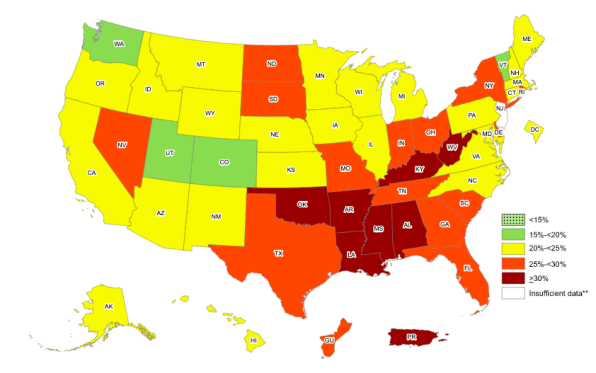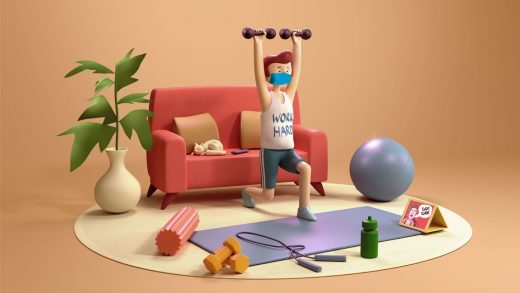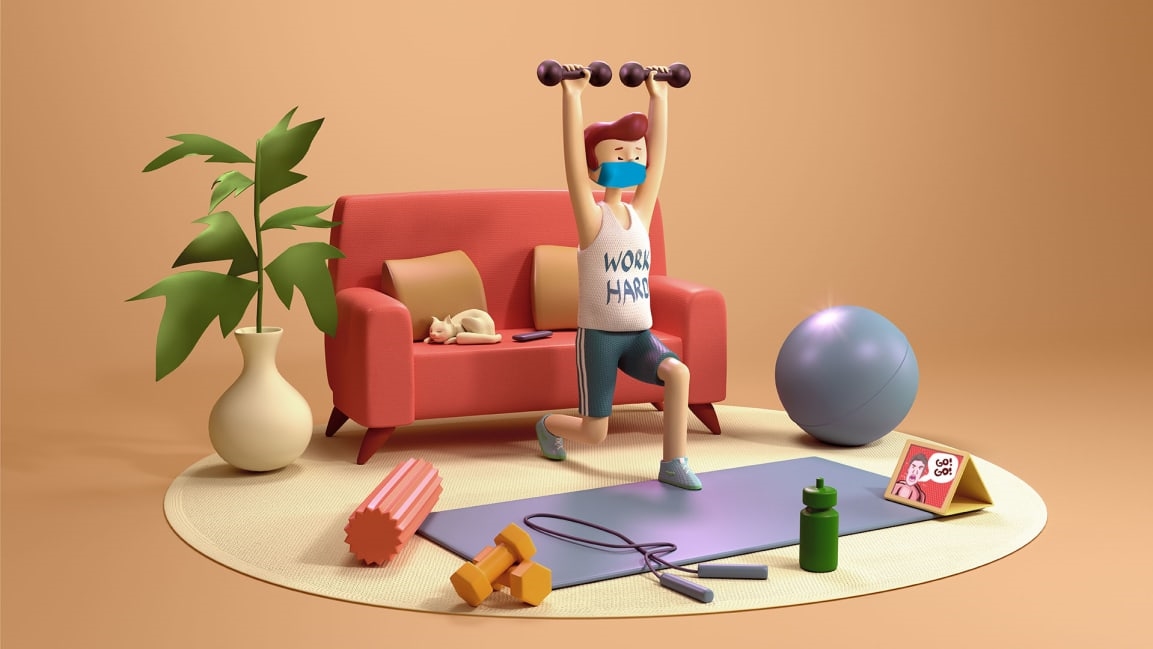How the pandemic wrecked our relationship with exercise
In December, when omicron started to hit in New York, I stopped going to the gym and I was angry about it. Not just angry, enraged. I had just JUST started going to the gym again two weeks earlier. For the last two years, I had managed some kind of workout from home, cobbled together from a couple workout apps, YouTube videos, weights, and some exercise bands. But who was I kidding? Working out on a mat in your living room sucks. In general, I move less than I did before the pandemic. The truth is, I can barely convince myself to take a walk around the block in the middle of the day. Most hours I’m tethered to a chair.
As new data from the Centers for Disease Control and Prevention (CDC) reveals, it’s not just me struggling against pandemic inertia. The center has released maps charting our physical malaise across states by race. The new CDC maps mark a change of positioning. For decades, the CDC has tracked physical activity and exercise through its Behavioral Risk Factor Surveillance System. This is the first time it’s talking about “inactivity.”

Between 2019 and 2020, physical activity went down in most places in the United States. (A few states like South Dakota, Kansas, and Nebraska actually saw an increase in activity during the pandemic.) Data from UC San Francisco suggest this collective indolence is a worldwide phenomenon. Regardless, the trend has the CDC rethinking its previous goals. Ideally, Americans would do 150 minutes of moderate physical activity a week or about 30 minutes per day for five days of every week. Now, it seems just boosting activity at all would be big.
“If we could help take the zero exercise minutes and just move ’em to five or 10 or 30 minutes a week,” says Jacob D Meyer, assistant professor of kinesiology at Iowa State University. “Even if we’re not getting ’em all the way up to larger amounts, that might be really powerful from a public-health perspective.”
Prior to the pandemic, we were starting to move in the right direction. Between 2011 and 2019, though four states lost momentum, seven states got more active. Between 2019 and 2020, the opposite happened: 14 states became far more sedentary, while seven states saw an increase in activity. Now, the CDC reports, a quarter of all Americans are inactive.
Not exercising isn’t great for your overall health—this you know. You might also know that exercising has a positive impact on how you feel. But constantly sitting, staring at a screen, is pernicious. Our pandemic gloom may be closely related to how little we’re moving.
In a study published last year, Meyer looked at depression levels as correlative to sitting time. “We saw pretty consistently that as people dropped that activity, that was associated with worse mental health across almost every metric,” he says. More sitting time over longer periods of time was associated with worsening symptoms of depression and anxiety (as was screen time). The paper raised a concern that pandemic-induced sitting “may have lasting effects on depressive symptoms.”
Unhealthy new normal
Perhaps one of the biggest losses from the pandemic was incidental exercise. With offices closed, we missed out on our commute, the walk around the block for lunch, walks to meetings, a walks down the street for that very necessary 4 p.m. coffee. What if we lose that for good? A mid-December report from Gartner found that 44% of offices scrapped their return-to-office plans thanks to omicron.
As you probably know quite personally, getting someone to work out is a lot harder than getting someone to sit down. “It is really, really difficult to get someone who’s not exercising to start a regular exercise routine,” says Meyer. “There’s lots of people who have lost that behavior and it’s likely to be very difficult to get that behavior back.” It is hard to develop new habits and to break established ones. Likewise, he says, if people have slowly increased the amount of sitting that they do, it will be tricky to reverse that behavior.
Will we ever exercise again? It is hard to get back into a routine. When I went back to the gym in December, I worked out like I always had, even though I had taken weeks, if not months, off. Day after day, I ran, I lifted weights, and I very quickly strained my hip—causing weeks of pain. When omicron hit, it felt like a setback on top of a setback. Should I just give up?
Perhaps as the CDC change of framing suggests, it might be worthwhile to stop thinking in terms of exercise and to start thinking in terms of movement. It could be enough to sit less (and, in my case, stretch more). “Find what sitting is modifiable and then figure out the best method to try to change that up,” says Meyer. “Those changes aren’t necessarily easy or convenient to do, certainly at the beginning, even if they can become standard habitual behaviors eventually.”
(47)



